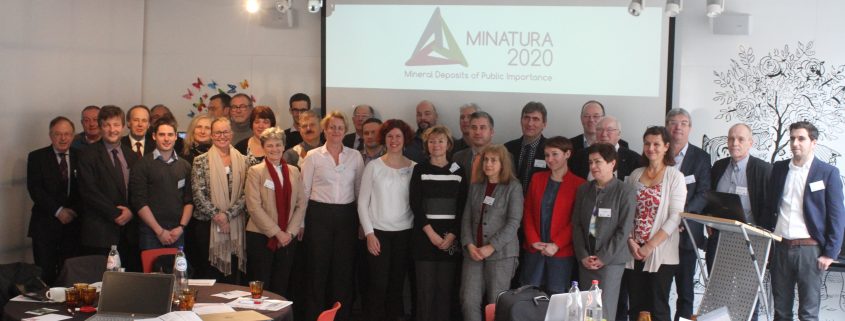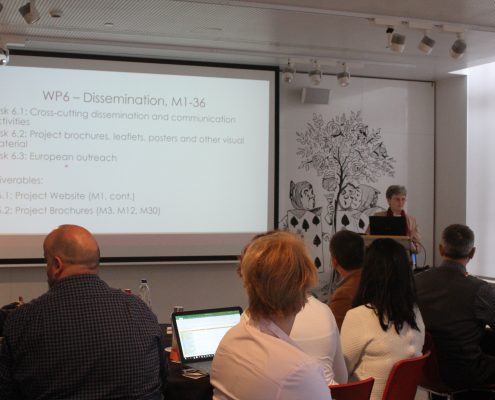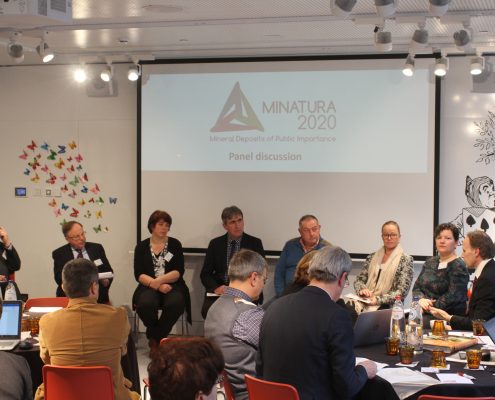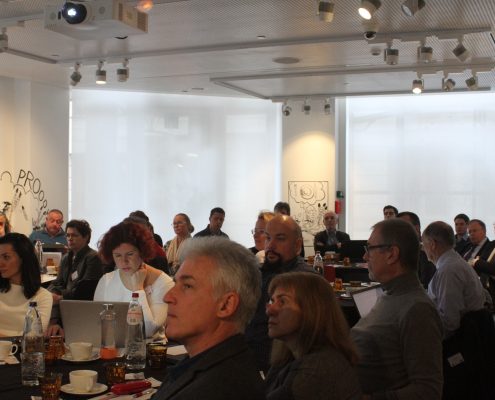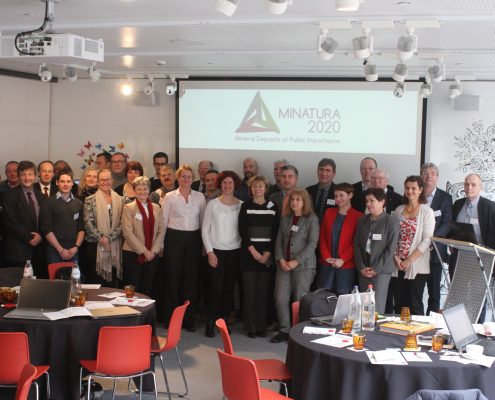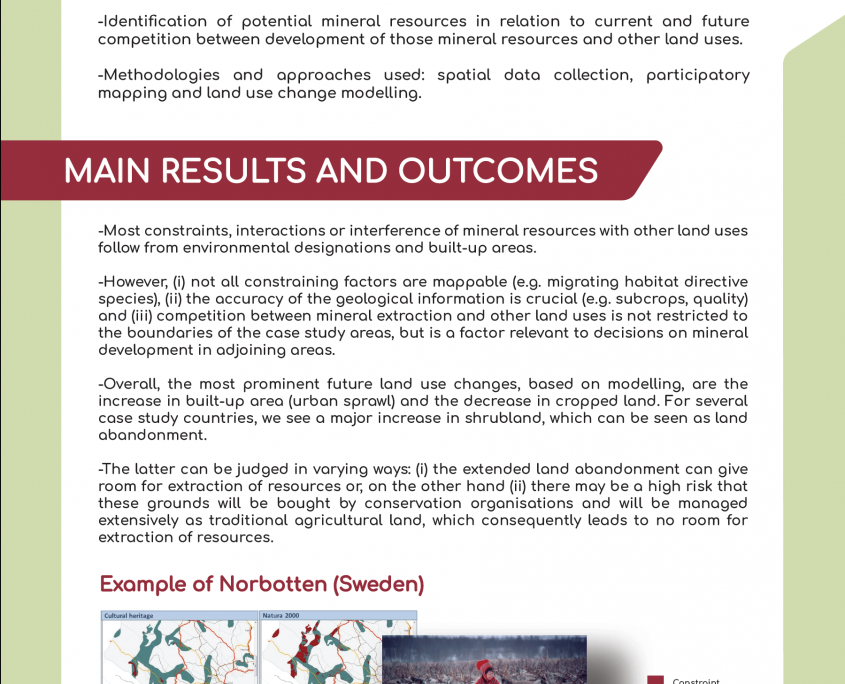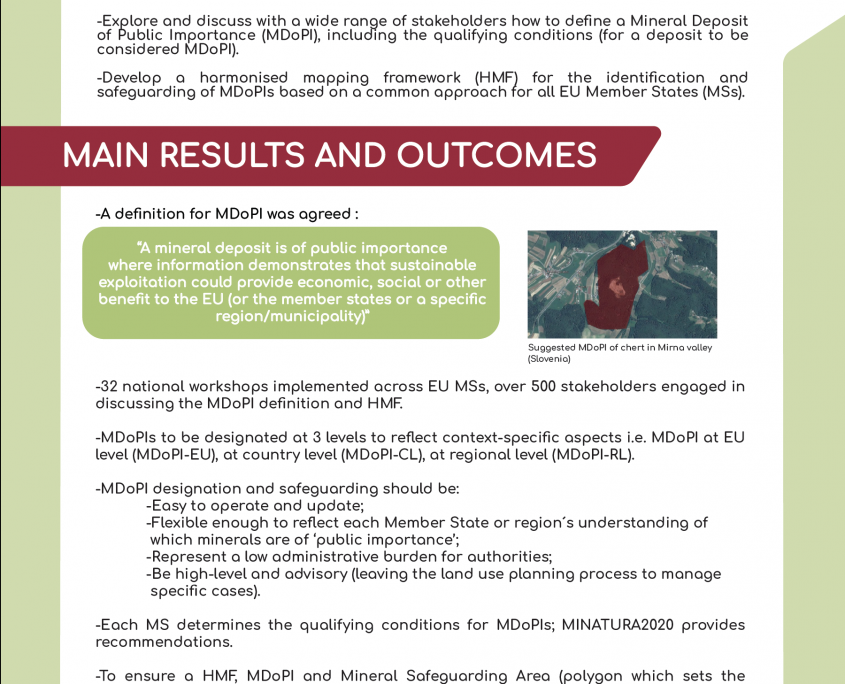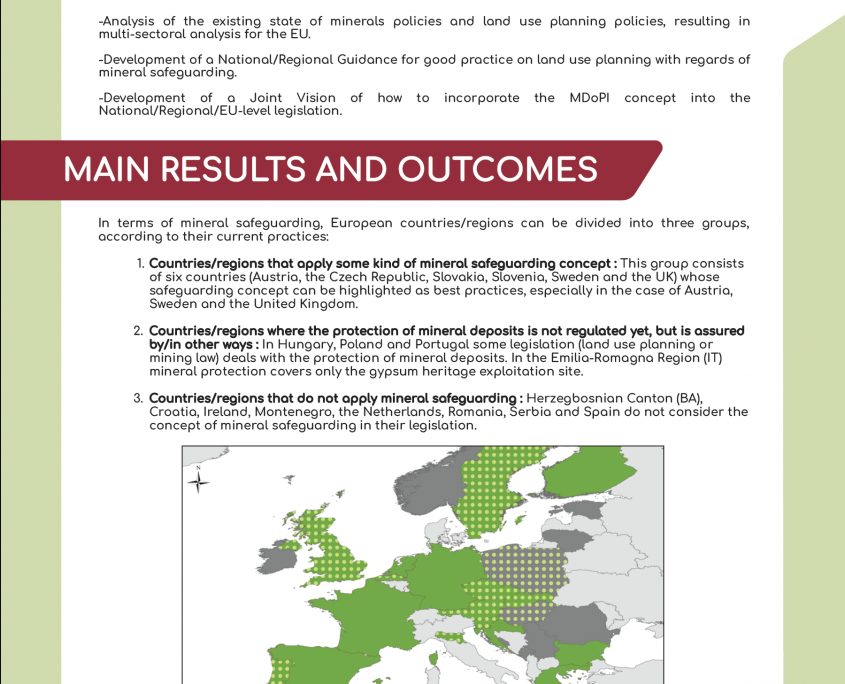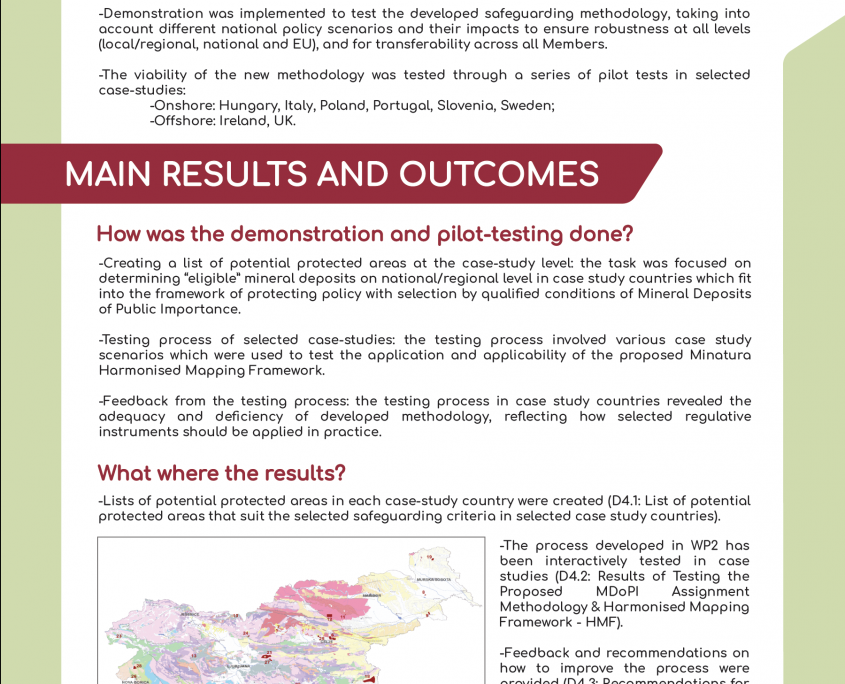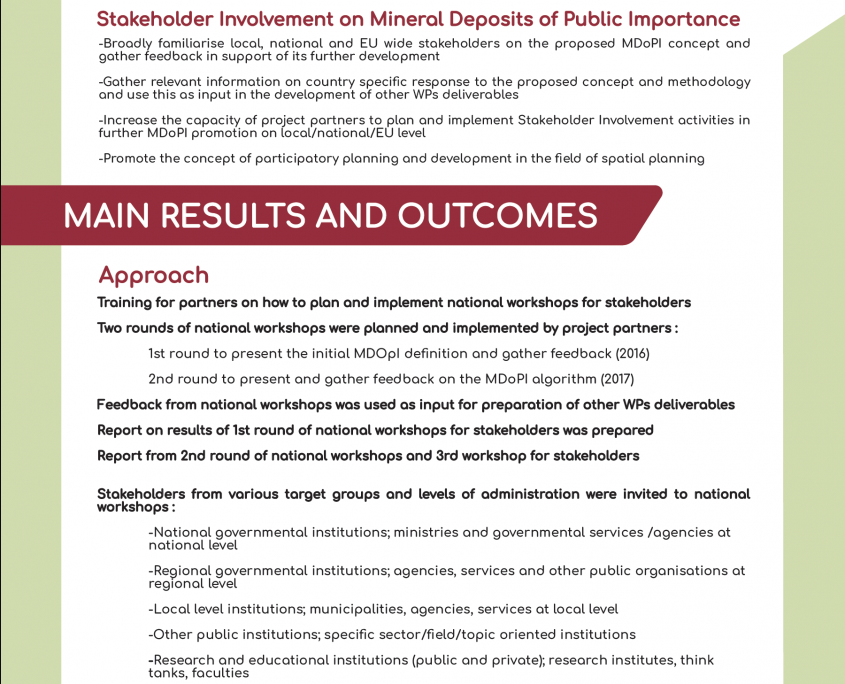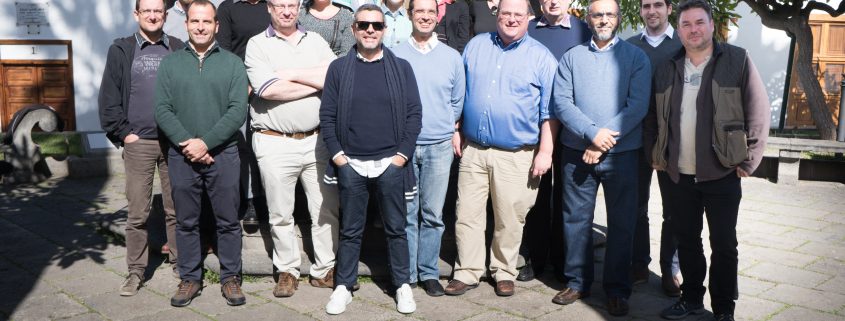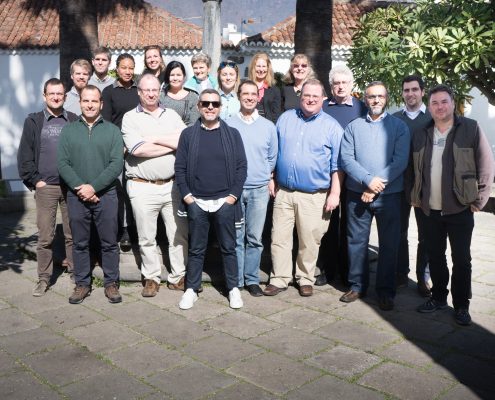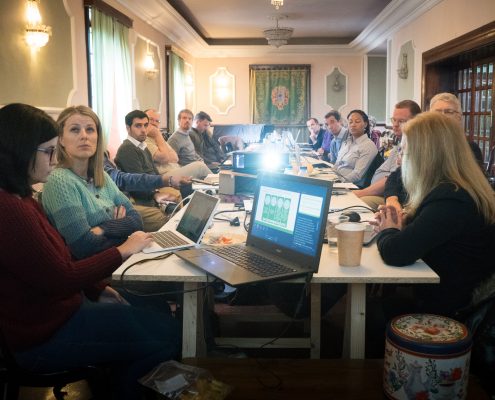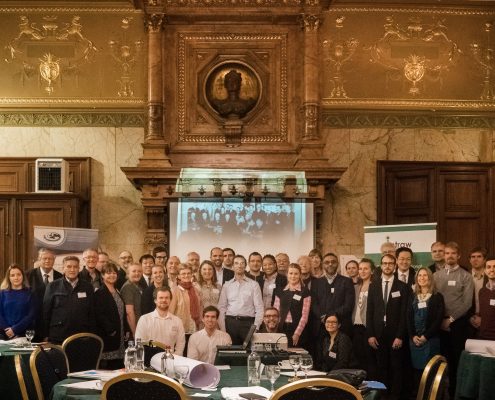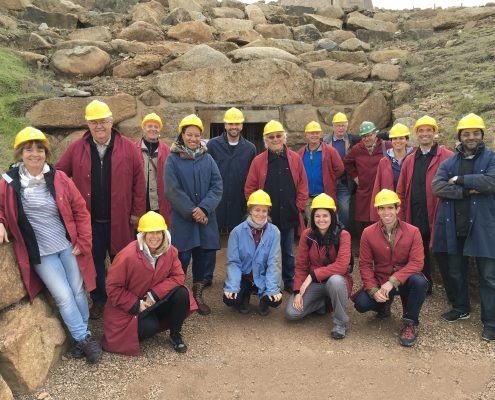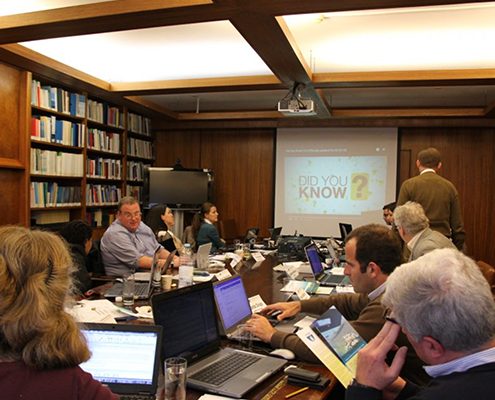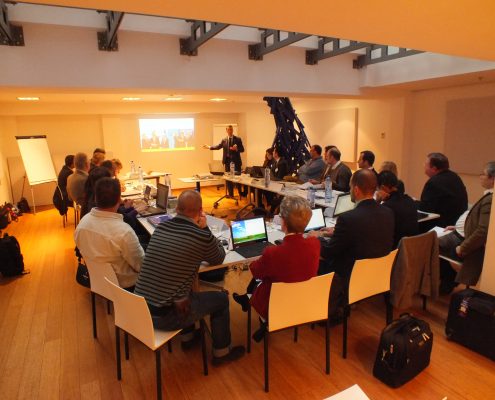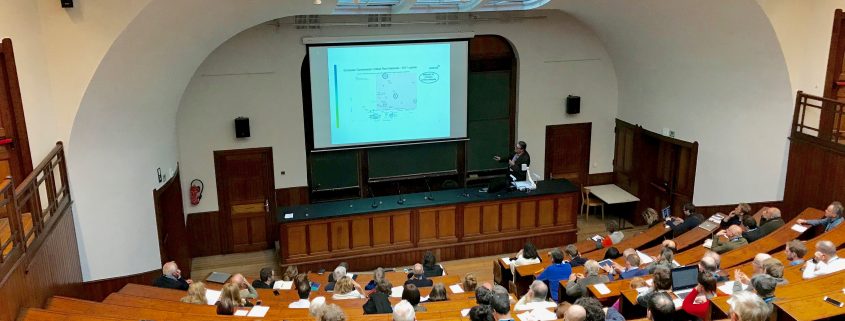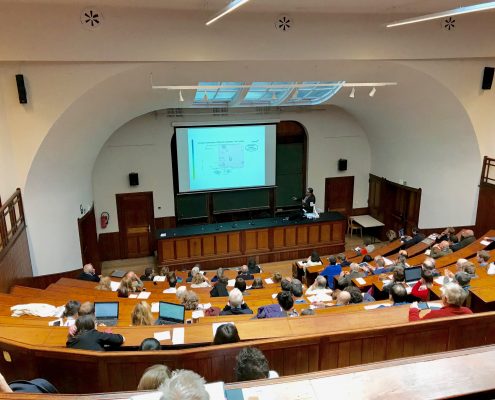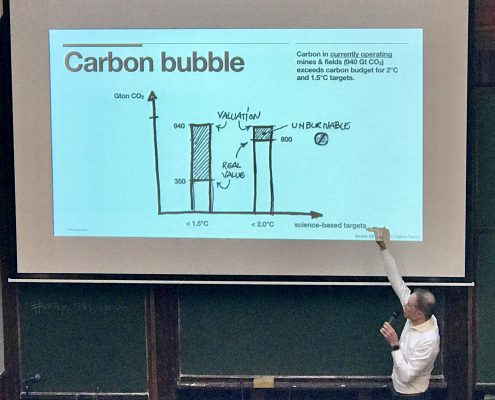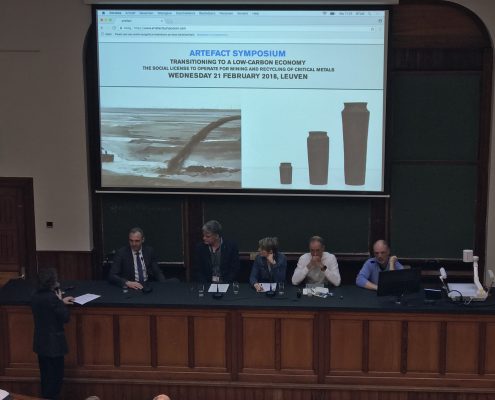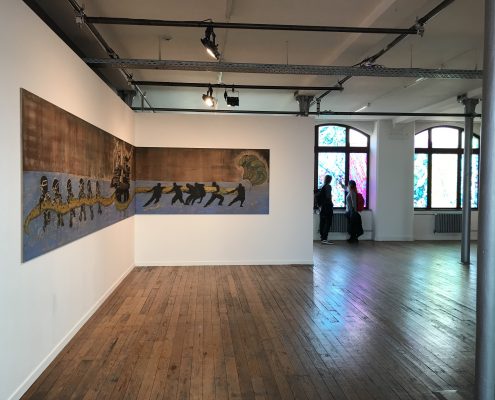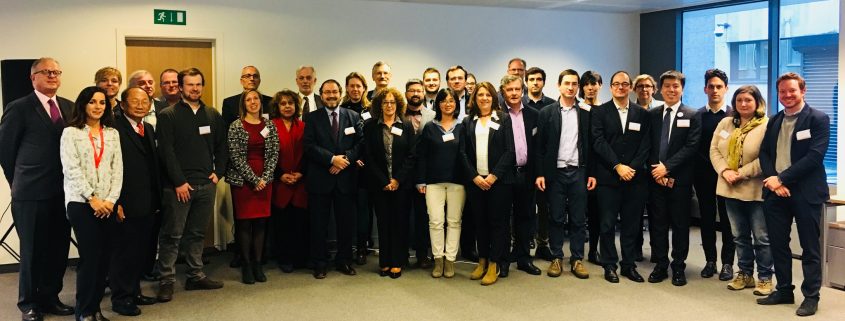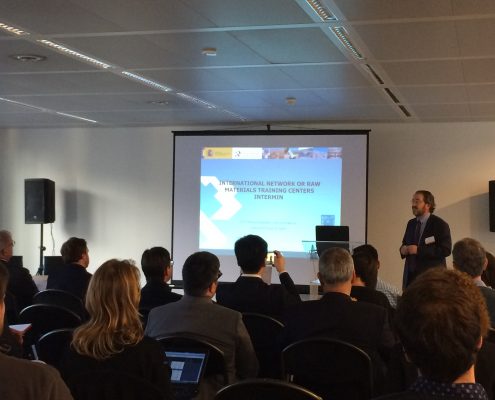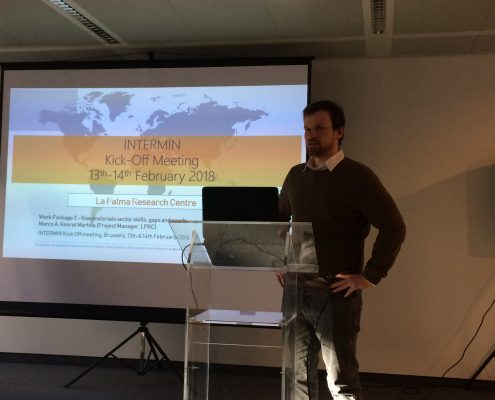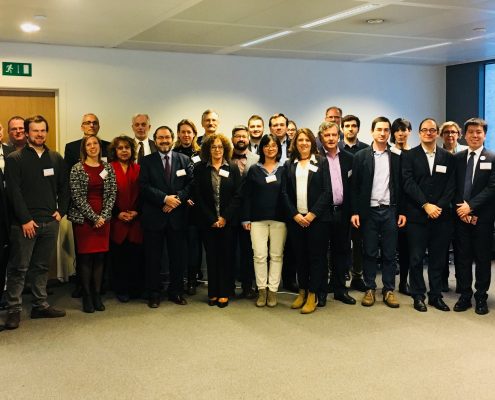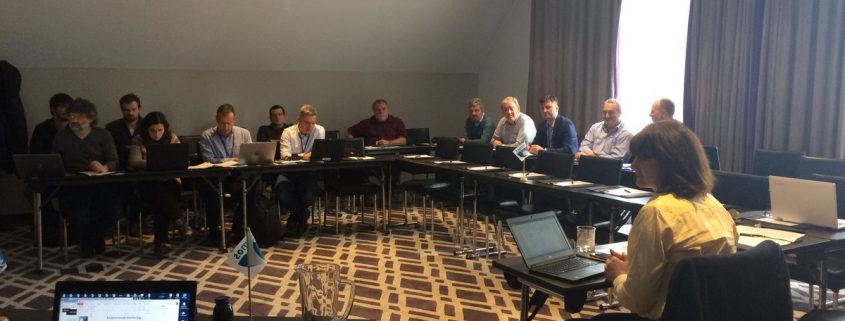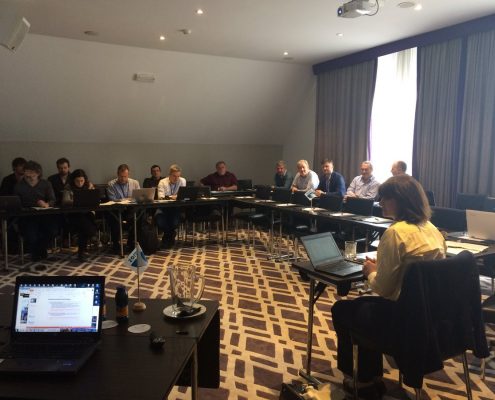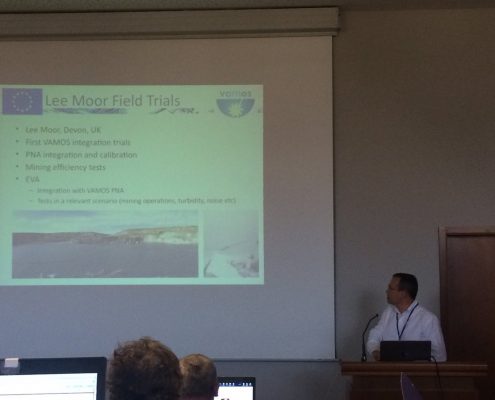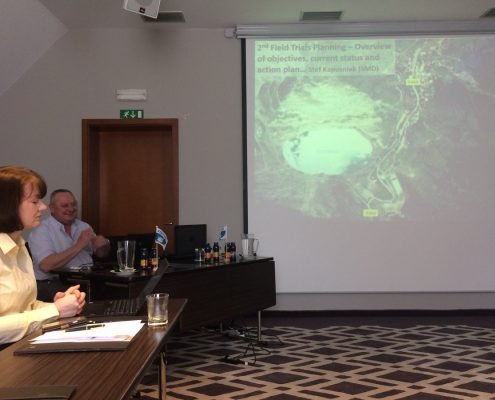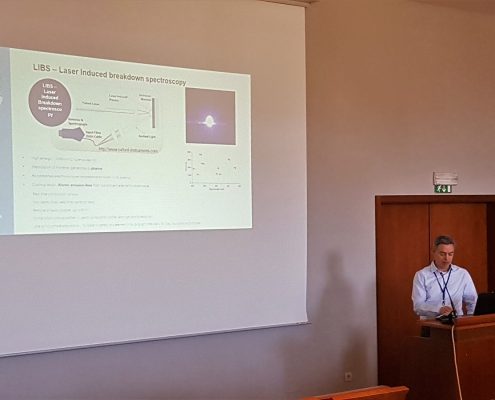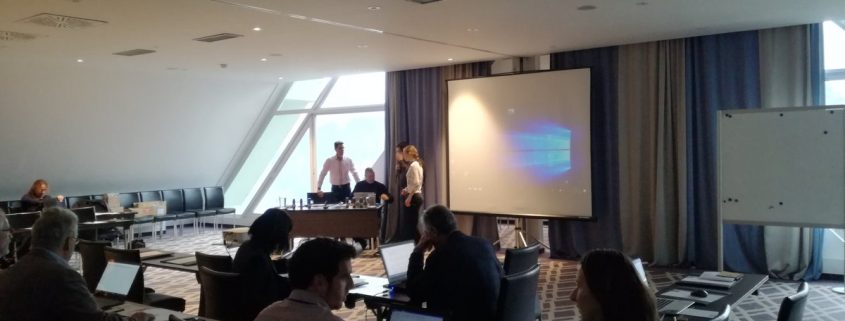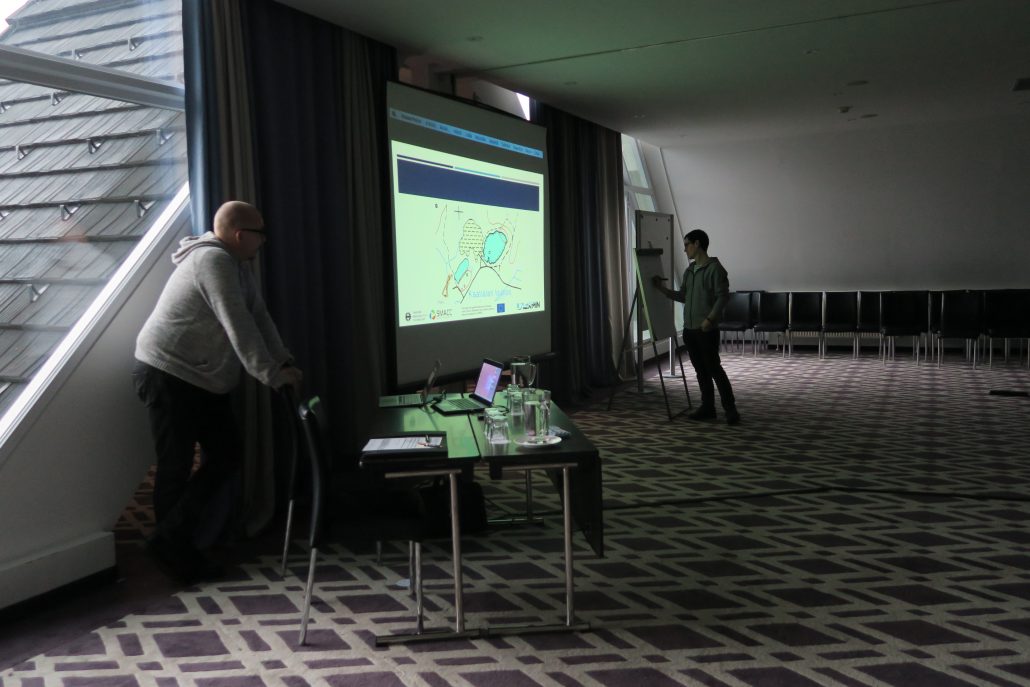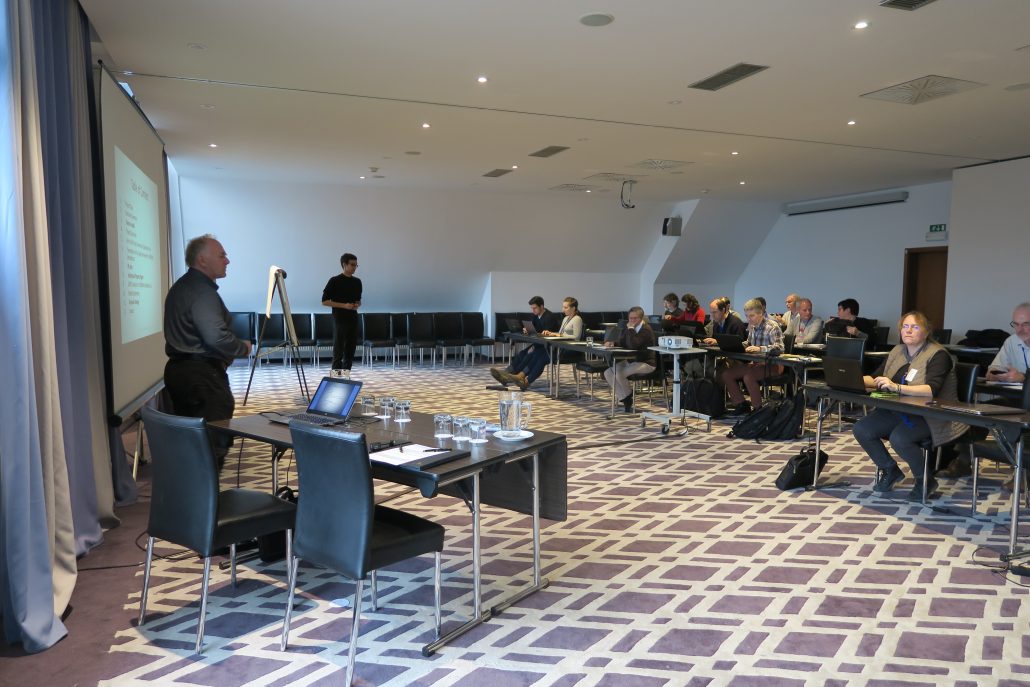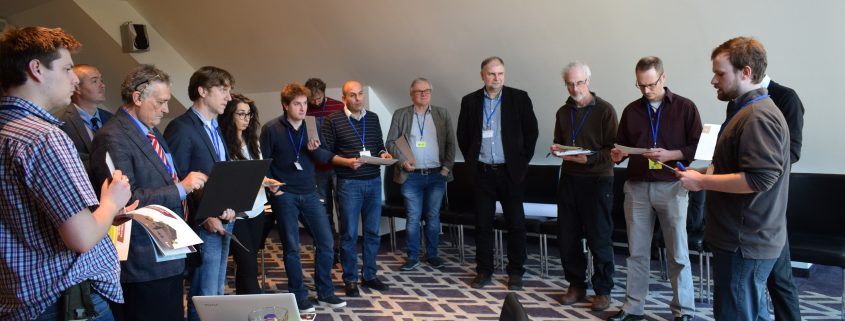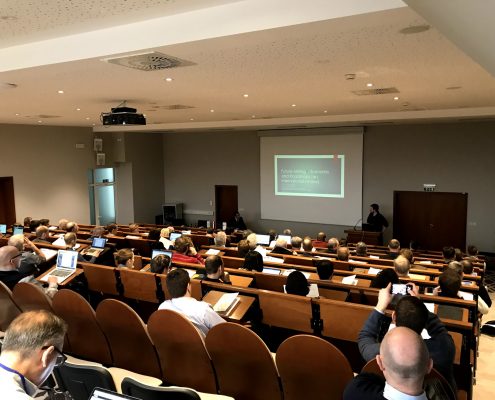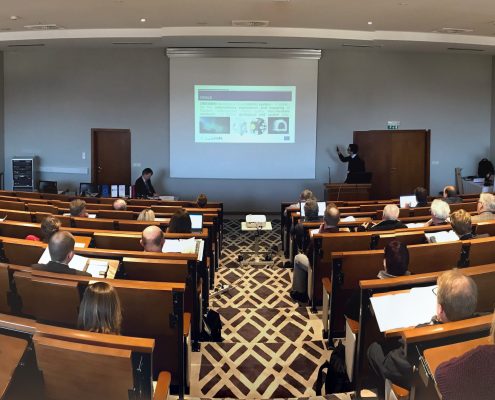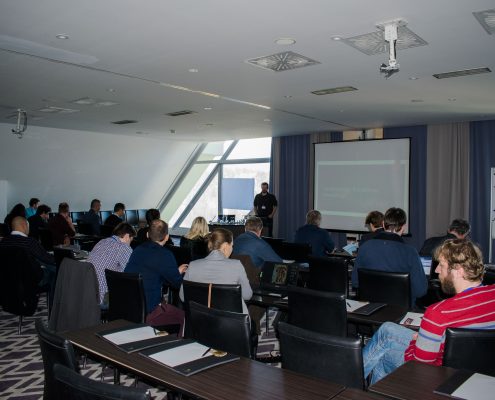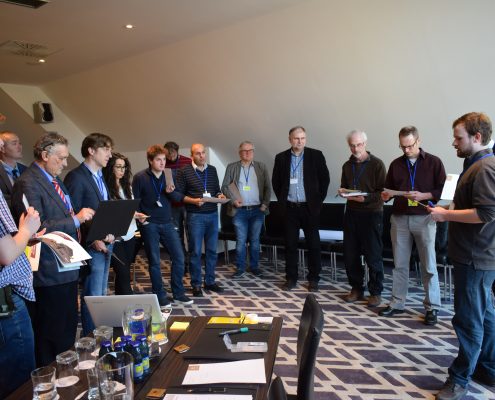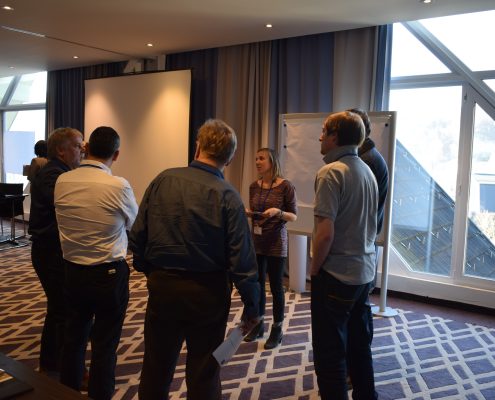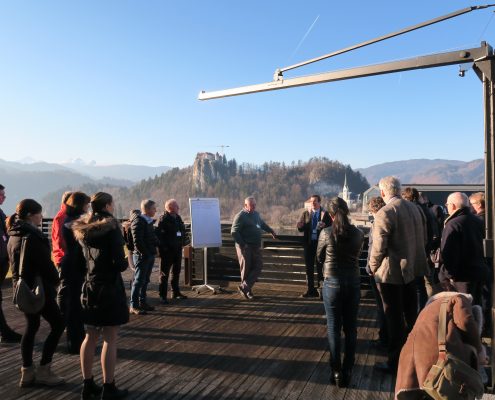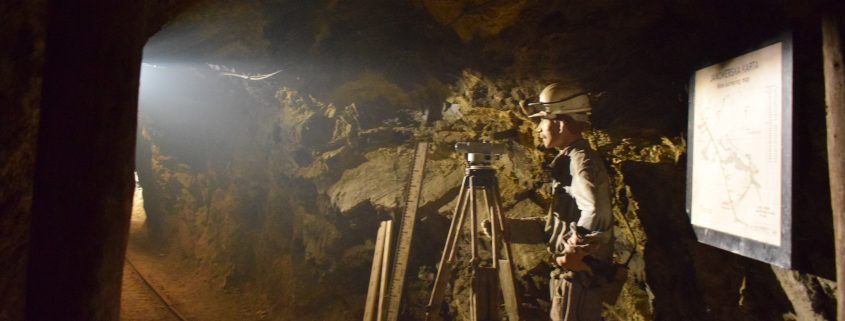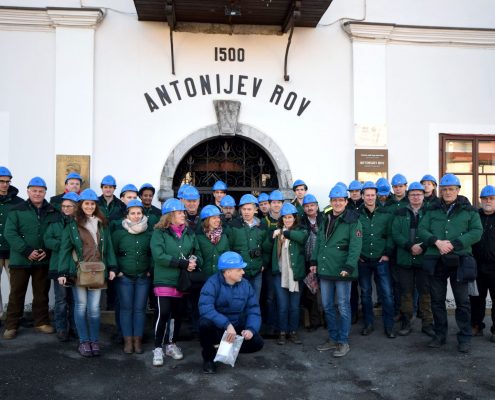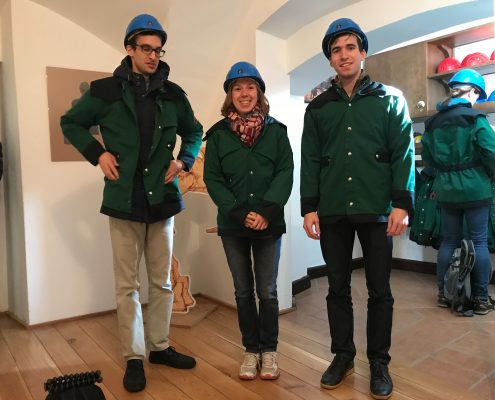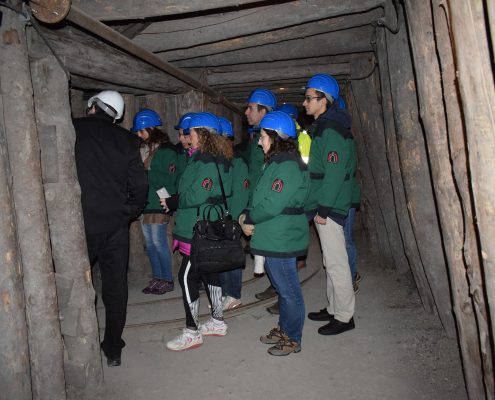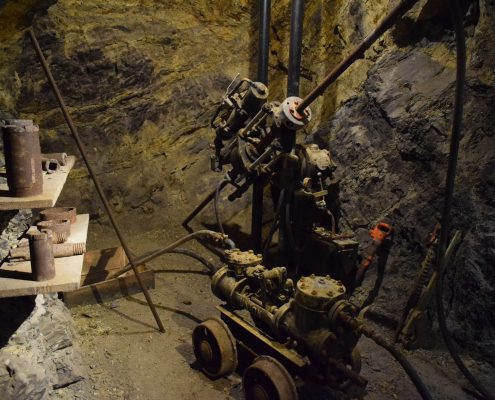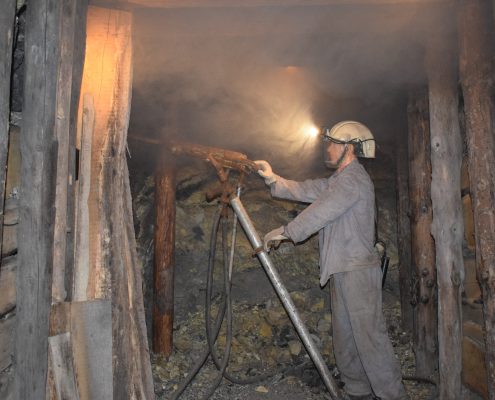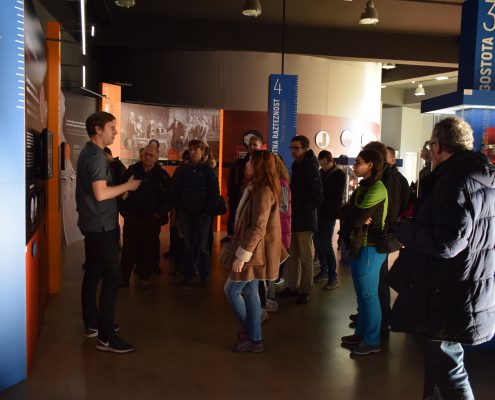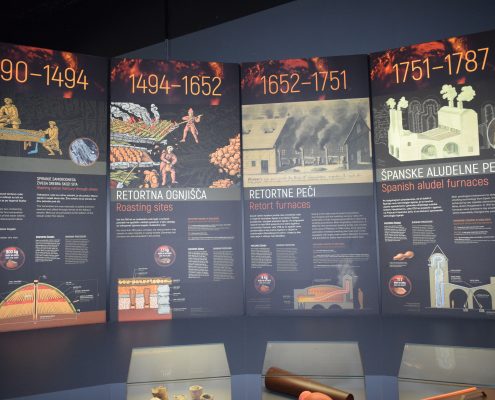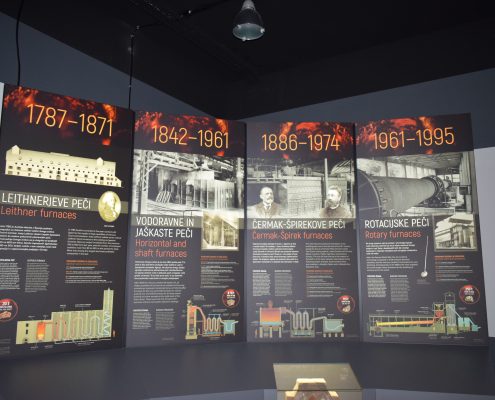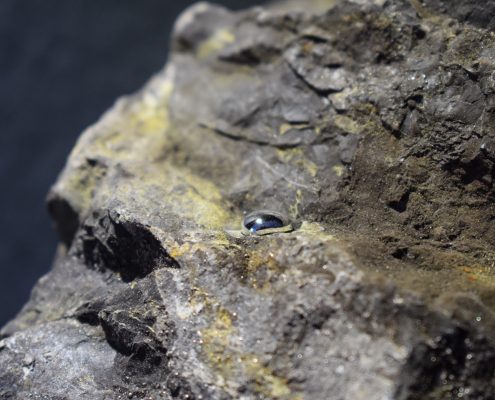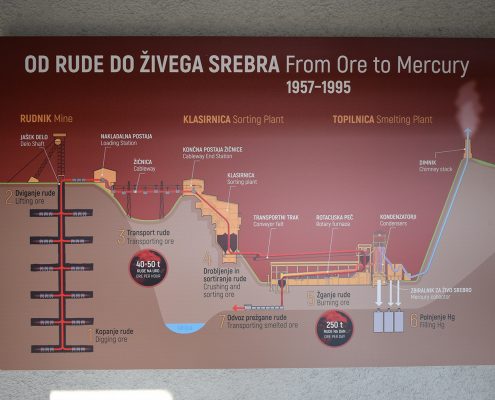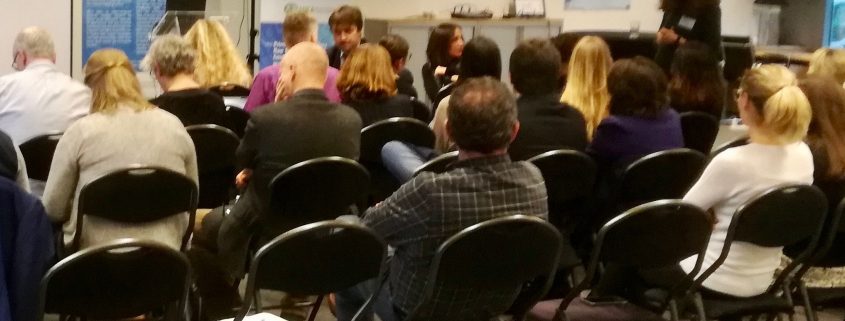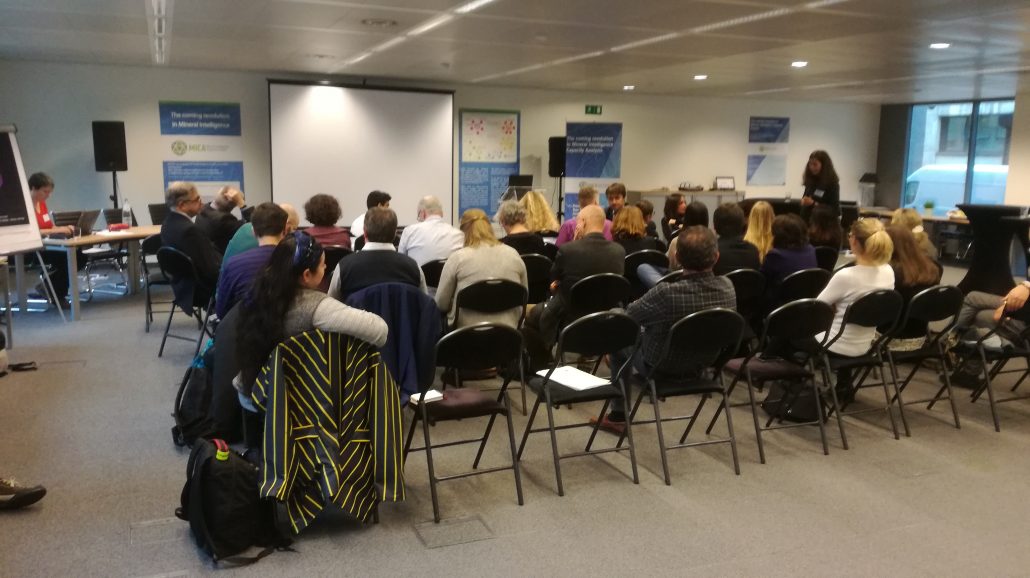Closing of Minatura 2020 Project
The Horizon2020 Minatura 2020 project oficially finished on the 31st of January. After three years, the project consortium was able to delineate and start discussions around a very important topic: land-use planning for geological resources with the definition of MDoPI – Mineral Deposits of Public Importance.
The core of the work developed in Minatura 2020 was divided in 5 work packages:
WP1: Land use assessment – First, it was necessary to understand what are and what will be the sources of conflict between mining and other land uses (agriculture, hunting, etc.). This work was done based on existing methodologies and approaches at EU and national level.
WP2: Development of a harmonised mapping framework – With the data gathered from WP1 it was possible to start creating a mapping framework based on detailed qualifying conditions for classifying “mineral deposits of public importance”. The development of the mapping framework took into account appropriate existing mineral planning policies of countries considering the access to mineral deposits. This allowed for possible MDoPI areas to be mapped.
WP3: Regulatory framework – The objective of WP3 was to define the possibilities to incorporate the concept of MDoPI established previously, into the regional, national and EU levels of minerals land use planning. The idea was to explore and establish regional, national and EU-level regulatory criteria for the safeguarding of MDoPI at different levels.
WP4: Demonstration and pilot-testing of developed methodology at case-study level – In WP4 the methodology developed was tested in practical terms in some countries, such as Hungary and Slovenia, taking into account different national policy scenarios and their impacts.
WP5: Stakeholder involvement on mineral deposits of public importance – Finally, the always important involvement with different stakeholders was achieved by WP5. Here, the partners held national consultation workshops to get information and opinions from relevant stakeholders (Environmentalists, Governments) in the application of the MDoPI framework.
(Photo credit: Anita Stein)
Developing a mechanism to protect and safeguard mineral deposits in Europe proved to be a challenging task due to the many divergences present through all European countries and to challenges in land-use planning. However, the Minatura 2020 project was able to create a definition and establish different sets of criteria that can be applied by different countries to protect their mineral deposits for future use. This is the main conclusion coming from the Minatura 2020 final meeting that was held in Brussels on the 10th of January.
To obtain more information, including project publications, please visit the Minatura 2020 website!

